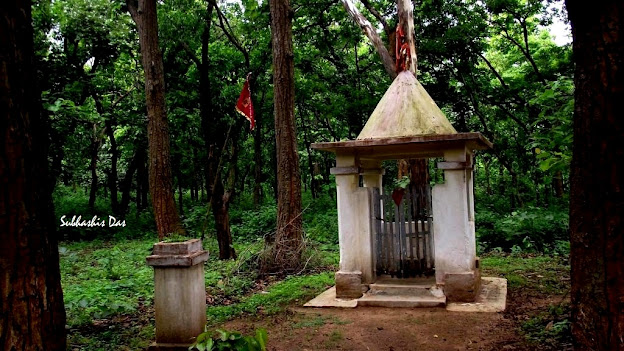Canary Hill is certainly synonymous with Hazaribagh town.
People tend to call it Canary Hill relating it to the Canary birds which they believe that the hill once was their abode, little knowing that the Canary is not an Indian bird. I was told that the term like several names of villages and rivers in Jharkhand Canary too is an austric Santali word meaning "arrow head".
Searching in the dictionary, "Santali-Hindi Shabdkosh" by Swarnalata Prasad of the Tribal Research Institute, Ranchi, I tracked the word and I found that the word "कानारी" or Canary or (Kanari) indeed meant "तीर का नोक" (Page 302) which translates into English as an "arrow head" and not as the Canary bird as commonly believed.
Therefore discarding the colonial origin of Canary as the name of the Hill that associates it with a non-Indian bird, I prefer to call it with its original name of KANARI.
Many also believe that the towers atop the Hill is a gift of the Britishers which incidentally is wrong as these were built by the Forest Dept after the Independence.
 |
The mysterious Canary (Kanari) Hill.
Shrouded in mystery this photograph of the iconic Canary Hill is clicked by Mritunjay Sharma. |
From the twin towers atop the Hill one gets an awesome view of the surroundings and even of the Hazaribagh town. Behind the Hill is a guest house, another spectacular creation of the Forest Dept. A beautiful pavilion is situated here which is another view point from which one gets a view of the forest around and of the hills in the horizon. .
Around the Hill several prehistoric habitation sites, megalithic sites and even Buddhists sites have been found that suggest that the hill was significant even to the ancients. The Hill is enclosed by several rivers as the Jagadishpur, Sindoor and the Galgal among many.
Canary Hill lay barren, devoid of any trees in the late 19th century but today the Forest Department working wonders has certainly converted the Hill into an amazing forested hide out home to several species of birds, insects and trees etc.
Canary once featured prominently in Bangla literature and there was a time in the 50s, 60 and 70s, Hazaribagh or more significantly speaking Canary Hill and the Gibraltar House close to the Hill was the favoured destination for the shootings of several Bangla films.
Come winter, the National Park and the Canary Hill was infested with tourists arriving in loads from Bengal.
Today although the tourists have deserted the Hill yet the locals seeking solace, bird and insect photographers in quest of their subjects, archaeology hunters and lovers desiring a little space of their own flock to the Canary Hill.
Below are few photographs that may give you an understanding of the beauty of the iconic Canary Hill.
Click left on the photographs to get the blow up of the images.
 |
Various shades of the iconic Canary (Kanari) Hill from different angles. |
 |
The mysterious Canary (Kanari) Hill.
Shrouded in mystery this photograph of the iconic Canary Hill is clicked by Mritunjay Sharma. |
 |
Below the guest house on the circular path are these sacred shrines . |
 |
Around the Hill: The wonderful pathway with an overhead branch performing as a gate. Sadly the "gate" has fallen down in a storm. |
 |
Around the Hill: The snug little temple that one can still behold in the wooded forest of the surroundings of the Hill. |
 |
Around the Hill: The red-green Forest Dept bamboo hut in the now defunct Forest Dept nursery beside the eminent banyan in the surroundings of the Canary Hill. |































तस्वीरों के जरिये खूबसूरत यादें
ReplyDelete